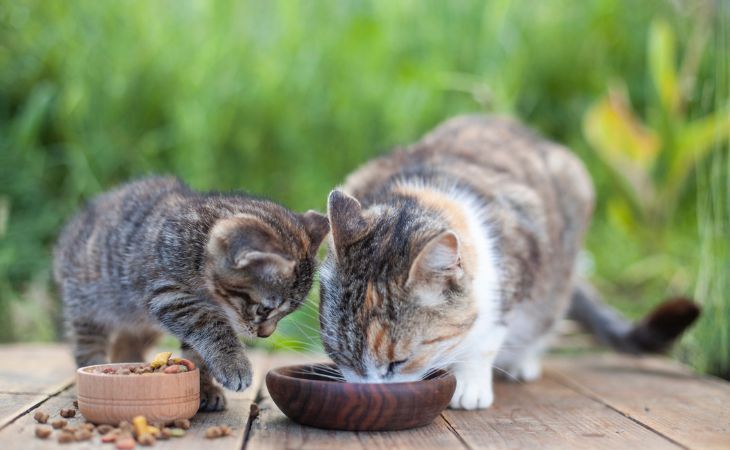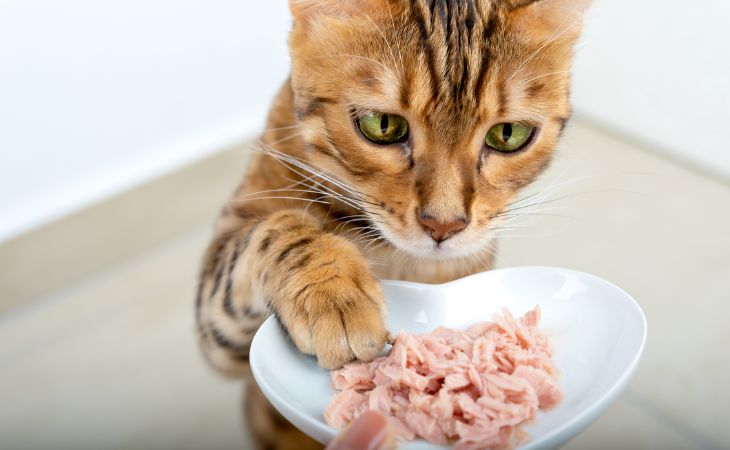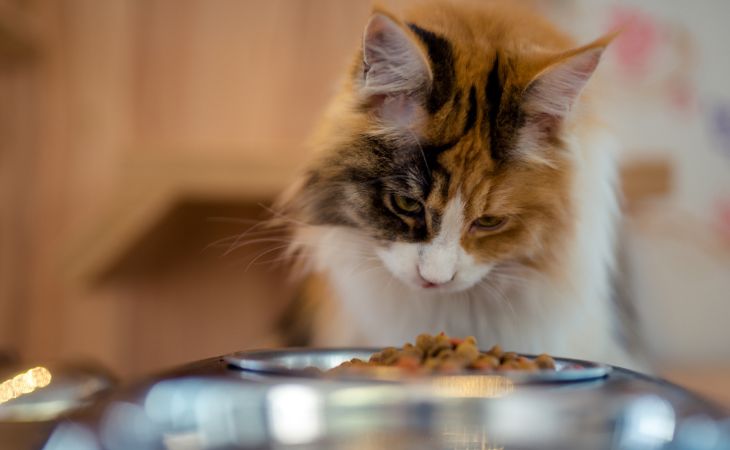While some cats are easy-going and easy to please, others are incredibly finicky. Even though a cat’s personality can influence how they behave, a cat’s behavior can also stem from their upbringing. For this reason, it is important to be careful when it comes to the habits and behavior that you let your cat develop. In this article, we share our tips on how to deal with a cat’s finickiness.
Understanding why your cat is finicky
Keep in mind that a cat can become finicky through the way in which they were brought up.
Their upbringing
Unlike dogs, who are typically willing to eat anything and everything, cats are known for their reputation as finicky eaters. With that being said, it is important to point out that cats are not born finicky. Instead, their finickiness typically stems from how they have become through their upbringing. For example, they can become accustomed to and prefer a certain type of texture, flavor, or scent.
Kittens are also heavily influenced by what their mother would eat. This is especially true when it comes to the texture of their food. After having suckled their mother during the first few months of their life, kittens will lean towards textures that are similar, as well as textures that their mother would eat next to them. Wanting to imitate their mother, kittens eat the same type of food.
It’s also important to understand that the food that we choose to give to our kittens can be at the origin of their finickiness. Generally, cats prefer wet food more than traditional dry food. After having tasted appetizing wet food with flavors such as salmon or cod, a cat will struggle to want to eat dry food again. For this reason, it’s best to introduce different types of textures and flavors to your cat when they are still young. Doing this will prevent your cat from being accustomed to only one type of food.

An uncomfortable feeling during their meal
If your cat has eaten a food that has caused digestive issues in the past, it is highly likely that they will no longer want to eat it.
Cats are easily able to determine if they will like the food or not. If they are not particularly enticed, they would rather just leave it.
In addition, cats look for comfort and tranquility more than anything during their mealtime. For this reason, cats usually prefer large bowls that allow them to eat without bothering their whiskers.
Additionally, if cats do not like the position that they are in or do not have enough space, they would rather just leave and search for food elsewhere. Similarly, a bowl that is located in an unsafe area or an isolated corner will not attract your cat.
How should I react when confronted with a finicky cat?
It’s important to make an effort to ensure that they are comfortable. This is especially important when it comes to their food.

Help your cat feel at ease by providing them with a certain level of comfort
When cats are confronted with various changes in their daily life, it can generate some discomfort. For instance, an unfamiliar odor, such as the scent of a new product that you bought to clean your cat’s food bowl, can make your cat feel uncomfortable. Similarly, unfamiliar sounds and people can bother your cat. These situations can cause cats to lose their appetite. To prevent this and provide your cat with a comfortable and pleasant experience during mealtime, make an effort to follow these rules.
First, reserve a cozy space for them to eat during their meals. The goal is to create a space where your cat could feel completely safe. Keeping their eating area away from the litter box is important. Cats prefer when these areas are well-separated.
Secondly, as cats are extremely sensitive to smells, we recommend using a stainless steel bowl or a ceramic bowl rather than a plastic one. Plastic retains odors much more easily.
Thirdly, it is best to wash your cat’s bowl regularly. Cleaning it at least once per day will ensure that your cat is at optimal comfort.
Lastly, it’s ideal to give your cat food that is around room temperature, or 38°C to 40°C (≈ 100°F to 104°F). This is because cats are just as sensitive to temperature as they are to the scent of their food. For example, they do not like when their food is too hot or too cold. Studies have shown that switching from giving cats food that is 20°C (≈ 68°F) to food that is 40°C (≈ 104°F) increases the amount of food consumed by cats by 80%. This is primarily because the temperature is closer to the temperature of what their prey would be when hunting for food.
A preference for jelly rather than minced food
Cats enjoy biting their food in order to warm it up before it enters their digestive tract. It is therefore preferable to serve them jelly, in blocks, rather than minced food. Furthermore, cats swallow minced food too quickly since they are already pre-cut. Jelly, on the other hand, which needs to be chewed first, is also more digestible. This means that cats consume it less quickly and feel fuller faster. Moreover, jelly forces cats to swallow large chunks. As opposed to minced, which is thinly sliced.
Make your cat’s food more appetizing
Does your cat find the food you give them to be unappetizing? Don’t worry! You can try to soaking dry food in a broth to soften them. This will make them more appetizing. If your cat prefers wet food, they will enjoy it.
Another tip is to add salmon oil on the food that your cat does not want to eat or no longer wants to eat. The appetizing scent of the salmon oil will attract your cat. It is possible to make food that isn’t very appetizing for cats at first glance a bit more palatable. Try these various tips and leave time for your cat to adapt. Keep in mind that you will have to be very patient.

